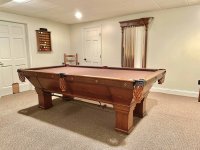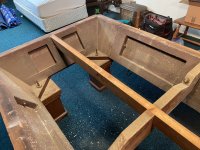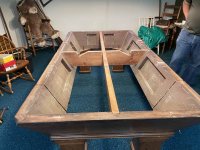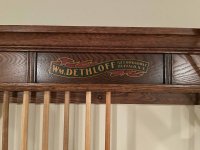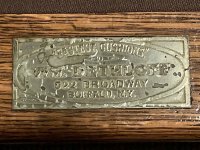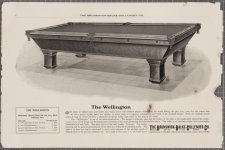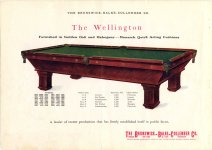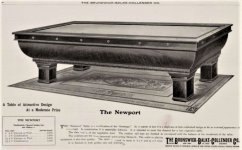I have inherited my grandfathers pool table and am trying to figure the manufacturer. The headrail plate (along with the cue rack) says "Wm. Dethloff 522 Broadway, Buffalo, New York."
I have tracked down the great grandson of Mr. Dethloff and he is reaching out to their extended family to see if they have any information. Mr. Dethloff did manufacture pool tables at his factory in Buffalo. I am including photos of the table, rail plate, disassembled table, cue rack, etc. There are no stamps/marks on the slates (3 pieces at 1"thick) or elsewhere except a serial number (2182) on all the pieces. The rails are attached to the table with the Brunswick style bolts (three holes- two holes to tighten the bolt and a central hole to hold the screw for the rosette cover).
From the experts who have so kindly shared their time and expertise with one reallyannoying motivated individual (Me!) the consensus seems to be either a Brunswick Wellington from 1903-1911 (the only years it was made.) or Mr. Dethloff made it to look just like the Wellington.
My question is, is there any way to definitively rule in or out a Brunswick table?
Thanks for any information that you can share!!
Rob
I have tracked down the great grandson of Mr. Dethloff and he is reaching out to their extended family to see if they have any information. Mr. Dethloff did manufacture pool tables at his factory in Buffalo. I am including photos of the table, rail plate, disassembled table, cue rack, etc. There are no stamps/marks on the slates (3 pieces at 1"thick) or elsewhere except a serial number (2182) on all the pieces. The rails are attached to the table with the Brunswick style bolts (three holes- two holes to tighten the bolt and a central hole to hold the screw for the rosette cover).
From the experts who have so kindly shared their time and expertise with one really
My question is, is there any way to definitively rule in or out a Brunswick table?
Thanks for any information that you can share!!
Rob
